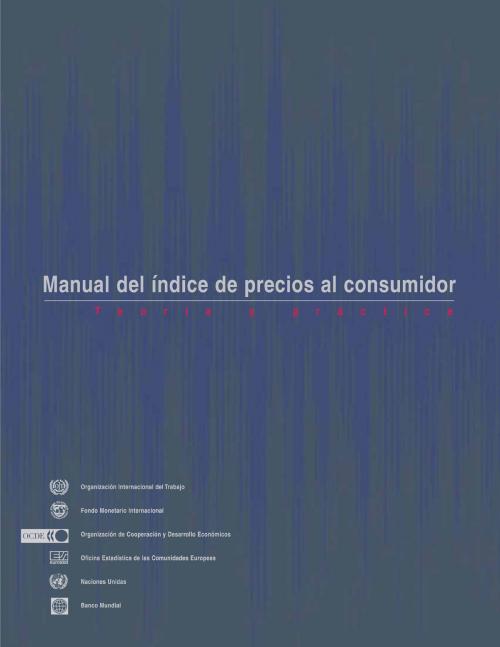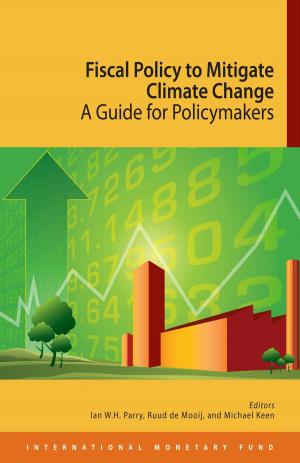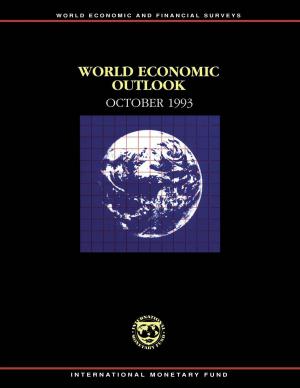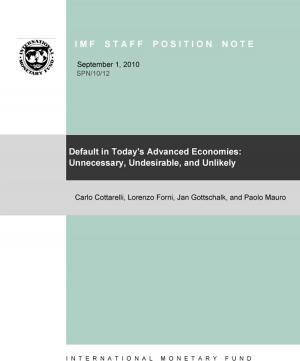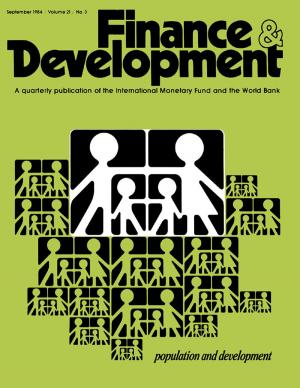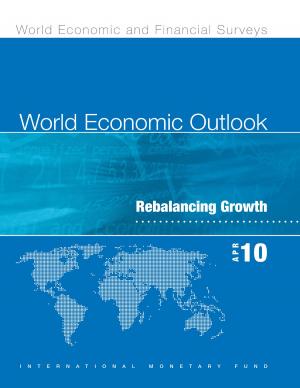Consumer Price Index Manual: Theory and Practice
Business & Finance, Economics, Statistics, Public Finance, Finance & Investing, Finance| Author: | International Monetary Fund | ISBN: | 9781455257829 |
| Publisher: | INTERNATIONAL MONETARY FUND | Publication: | November 8, 2006 |
| Imprint: | INTERNATIONAL MONETARY FUND | Language: | Spanish |
| Author: | International Monetary Fund |
| ISBN: | 9781455257829 |
| Publisher: | INTERNATIONAL MONETARY FUND |
| Publication: | November 8, 2006 |
| Imprint: | INTERNATIONAL MONETARY FUND |
| Language: | Spanish |
El Índice de Precios al Consumidor (IPC) mide la evolución de los precios al consumidor de los bienes y servicios a través del tiempo. Es una estadística clave para formular tanto políticas económicas, especialmente monetarias, como políticas sociales, y tiene consecuencias importantes y diversas para los gobiernos, las empresas, los trabajadores y los hogares. Este exhaustivo manual proporciona pautas para oficinas de estadística y otras agencias responsables de la elaboración del IPC y explica en profundidad los métodos utilizados para calcularlo. También examina los conceptos y principios económicos y estadísticos necesarios para tomar decisiones eficientes en función de los costos y para apreciar las consecuencias de esas elecciones en toda su magnitud. Es una herramienta valiosa para los encargados de formular políticas y los investigadores, especialmente para aquéllos interesados en los números índice. Las siguientes organizaciones internacionales que se interesan en la medición de la inflación y en las políticas para controlarla colaboraron en la preparación de este manual: la Organización Internacional del Trabajo, el Fondo Monetario Internacional, la Organización de Cooperación y Desarrollo Económicos, la Oficina de Estadística de la Comunidad Europea (Eurostat), la Comisión Económica de las Naciones Unidas para Europa y el Banco Mundial. ----------------------- The consumer price index (CPI) measures the rates at which the prices of consumer goods and services are changing over time. It is a key statistic for purposes of economic and social policymaking, especially monetary policy and social policy, and has substantial and wide-ranging implications for governments, businesses, and workers, as well as households. This important and comprehensive manual provides guidelines for statistical offices and other agencies responsible for constructing CPIs and explains in depth the methods that are used to calculate a CPI. It also examines the underlying economic and statistical concepts and priniciples needed for making choices in efficient and cost-effective ways and for appreciating the full implications of those choices. The following international organizations, concerned both with the measurement of inflation and with policies designed to control it, have collaborated on the preparation of this manual: the International Labour Office; the International Monetary Fund; the Organization for Econmomic Co-operation and Development; the Statistical Office of the European Communities (Eurostat); the United Nations Economic Commission for Europe; and the World Bank.
El Índice de Precios al Consumidor (IPC) mide la evolución de los precios al consumidor de los bienes y servicios a través del tiempo. Es una estadística clave para formular tanto políticas económicas, especialmente monetarias, como políticas sociales, y tiene consecuencias importantes y diversas para los gobiernos, las empresas, los trabajadores y los hogares. Este exhaustivo manual proporciona pautas para oficinas de estadística y otras agencias responsables de la elaboración del IPC y explica en profundidad los métodos utilizados para calcularlo. También examina los conceptos y principios económicos y estadísticos necesarios para tomar decisiones eficientes en función de los costos y para apreciar las consecuencias de esas elecciones en toda su magnitud. Es una herramienta valiosa para los encargados de formular políticas y los investigadores, especialmente para aquéllos interesados en los números índice. Las siguientes organizaciones internacionales que se interesan en la medición de la inflación y en las políticas para controlarla colaboraron en la preparación de este manual: la Organización Internacional del Trabajo, el Fondo Monetario Internacional, la Organización de Cooperación y Desarrollo Económicos, la Oficina de Estadística de la Comunidad Europea (Eurostat), la Comisión Económica de las Naciones Unidas para Europa y el Banco Mundial. ----------------------- The consumer price index (CPI) measures the rates at which the prices of consumer goods and services are changing over time. It is a key statistic for purposes of economic and social policymaking, especially monetary policy and social policy, and has substantial and wide-ranging implications for governments, businesses, and workers, as well as households. This important and comprehensive manual provides guidelines for statistical offices and other agencies responsible for constructing CPIs and explains in depth the methods that are used to calculate a CPI. It also examines the underlying economic and statistical concepts and priniciples needed for making choices in efficient and cost-effective ways and for appreciating the full implications of those choices. The following international organizations, concerned both with the measurement of inflation and with policies designed to control it, have collaborated on the preparation of this manual: the International Labour Office; the International Monetary Fund; the Organization for Econmomic Co-operation and Development; the Statistical Office of the European Communities (Eurostat); the United Nations Economic Commission for Europe; and the World Bank.
